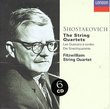| All Artists: Gustav Mahler, Benjamin Zander, Philharmonia Orchestra Title: Mahler: Symphony No. 9 / Zander, Philharmonia Orchestra Members Wishing: 0 Total Copies: 0 Label: Telarc Release Date: 2/23/1999 Genres: Special Interest, Classical Style: Symphonies Number of Discs: 3 SwapaCD Credits: 3 UPC: 089408052729 |
Search - Gustav Mahler, Benjamin Zander, Philharmonia Orchestra :: Mahler: Symphony No. 9 / Zander, Philharmonia Orchestra
 | Gustav Mahler, Benjamin Zander, Philharmonia Orchestra Mahler: Symphony No. 9 / Zander, Philharmonia Orchestra Genres: Special Interest, Classical
Mahler's Ninth is the epitome of his symphonic writing. It is in four movements: a 30-minute, discursive but highly polyphonic treatment of several extended melodies and striking rhythmic motives; a 15-minute dance-like mo... more » |
Larger Image |
CD DetailsSynopsis
Amazon.com Mahler's Ninth is the epitome of his symphonic writing. It is in four movements: a 30-minute, discursive but highly polyphonic treatment of several extended melodies and striking rhythmic motives; a 15-minute dance-like movement with three distinct themes in different tempos; a riotous, 13-minute scherzo that pits energetic motives against each other fugally; and a 27-minute adagio with a gorgeous opening that returns several times, each more powerfully scored than the last, only to dissolve devastatingly at the end. Zander, long a cult figure on Boston's music scene, leads the fine English orchestra in a "live" performance that investigates the score's characteristics with particular attention to Mahler's expressive markings and dynamic indications. In the first three movements, these are problematic, and Zander's attentions prove fascinating. The finale demands less in the way of detail, but more in the way of visionary expressiveness. Here, Zander is less convincing. Excellent sound. --Paul Turok Similar CDs
Similarly Requested CDs
|
CD ReviewsOver time, my thoughts have only been strengthened. Bob Zeidler | Charlton, MA United States | 04/14/2001 (5 out of 5 stars) "This is such a remarkable performance that I find myself thinking, more than a year after first hearing and reviewing this performance, that a second opportunity to comment on it could be beneficial to Amazon members browsing this page. Prior to the advent of the CD, I was (like many other Mahlerites, I am sure) a voracious Mahler collector, having complete, or nearly complete, or at least partial, traversals of his symphonies by the likes of Abravanel, Barbirolli, Bernstein, Haitink, Horenstein, Klemperer, Kubelik, Scherchen and Walter. This constituted a rather large collection of LP's; the space alone to simply store them became challenging. But it also afforded me an opportunity to assess different interpretational approaches, which, with this spectrum of conductors, was wide indeed. With the advent of the CD, there was a new challenge. Instead of having to find the space for many LP's, it became a matter of how to identify the one or two performances on CD that could endure on artistic (and, as well, technical) grounds. It was at this time (in early 1983) that Fanfare,a major journal for the review of serious music, became my principal guide for identifying where to start in this effort to "slim down" my Mahler library. Fanfare recommendations led me to Bernstein's live 1985 Amsterdam Concertgebouw performance and Karajan's live 1982 Berlin Philharmonic performance. These CD's have served me well for many years. But matters are now dramatically changed, and, I think it safe to say, forever. With Zander's performance, we know that we are in the presence of truly great music-making, and it is equally clear that his live audience recognizes this fact. One can start where one chooses in comparing Zander with Bernstein and Karajan. I choose to limit my comments to the final movement, for it is in this Adagio that I experience an ultimate truth for the first time. All too often with Mahler, critics and reviewers tend to focus on comparative timings, totally missing the critical importance of dynamics and what is known as "the long arc," the phrasing of a Mahler movement which makes the bar lines disappear, to be replaced by a continuous thread of music. One Fanfare reviewer gets it right when he states that Zander, while two minutes shorter than Bernstein/Concertgebouw, is not in the slightest less rapt or intense. Never has this been brought home more clearly to me in the Adagio than at the first entrance of the strings playing "ohne Ausdruck" (without expression), over the bassoon figure at 1:50, where the strings play so quietly that the utmost attention is demanded. I truly thought I knew this movement after having listened to quite probably a score of earlier recordings. But my heart almost stopped at 1:50, and I believe that I came close to listening to the remaining twenty-five minutes without taking a breath. I simply needed to suspend everything to give this playing the attention it demands. I listened to it several times over before concluding that I wanted to share my enthusiasm for this recording with others. In preparation for writing this note, I did what I seldom do - but what any conscientious music reviewer must do - I listened in turn to Bernstein and Karajan and then Zander perform this staggering movement, each from start to finish, as objectively as I possibly could. At the end of this hour and a half, with Zander, it was clear to me that I at long last heard Mahler's intentions as he meant them to be. As realized by Zander (and no one else, although Bernstein comes the closest by far), this was truly Mahler's leave-taking, his valedictory. It has such a palpable finality, such a peaceful resignation and acceptance, that one can almost sense the precise moment at which the soul has departed from the body. Zander's performance is so outstanding that it puts the various Cooke (and other) efforts at "completing" the 10th symphony in a totally new light. When I now listen to any of these 10th Symphony performing versions (and, to me, the Cooke version is the one which comes closest to capturing the spirit of "the Mahler that might have been"), it is with the sense that "the 10th may never have been meant to be" and that the 9th is his proper valedictory. At long last I (and I hope others) have the Mahler 9th for all time. I thought I could write this note without listening to Zander's commentary, hoping that I could do justice using just my own words. But I cheated, and listened to his commentary on the final Adagio, and discovered in the process that his words are more eloquent, and more illuminating, than anything I could write. If you get this performance, you have the option of listening to either the music or the commentary first, but do take advantage of Zander's insight; you will not be disappointed. Don't even think about the "three-for-one" pricing of this album. It would be a steal even if Telarc were to charge you the full list price for the 3 CD's. But it's nice that they didn't. Bob Zeidler" A six-star performance, really MartinP | Nijmegen, The Netherlands | 02/13/2002 (5 out of 5 stars) "Mahler doesn't come any better than this. I have listened to this recording time and again in total awe. It is scrupulously meticulous in its attention to what the score says, and the results take your breath away. Take for instance the `schattenhaft' episode in the first movement, where little trills on muted strings are being bounced back and fourth at pppp level. These players, under Zander's guidance, actually realize those four p's, truly differentiating them from ppp. These barely audible wisps of sound make you experience with shock what Mahler meant by `shadowy', creating a spooky, oppressive hush that had me nailed to my seat. This reading is full of such insights. One other example are the final bars, where a clear sense of phrasing and articulation remains intact even though the music disintegrates before our ears. But the powerful and sarcastic moments are realized to full effect as well, and the performance never loses sight of the big picture. Its impact stays with you long after the music has stopped. The recording is warm, clear and spotless to match (none of the intrusive audience noises here that spoil the final moments of the performance by Bernstein and the Concertgebouw Orkest; I wouldn't be surprised if Zander's audience simply forgot to breathe). This isn't only the finest Mahler Ninth ever to be put on record, I hardly hesitate to claim it is simply one of the greatest performances of all time of any piece of music. Meanwhile I can't wait to hear more Zander Mahlers!" A wonderful recording....A brilliant explanation Trevor Gillespie | San Jose, California United States | 10/14/1999 (5 out of 5 stars) "First of all, what a novel idea it is for Telarc to include the conductors own ideas and insights into Mahler's 9th symphony. It helped me understand and appreciate all the nuances of this performance. Plus, it's kinda cool to hear a British guy talk about music for about an hour.This recording of Mahler's 9th ranks among my favorites. Why? First the sound. Telarc is celebrated for its beautiful sound, and this CD does not fail to achieve just that. Second, the performance is incredible. A definite must-hear for anyone wishing to explore Mahler in general or specifically his 9th symphony. You may need to never buy another version again."
|

 Track Listings (4) - Disc #1
Track Listings (4) - Disc #1











